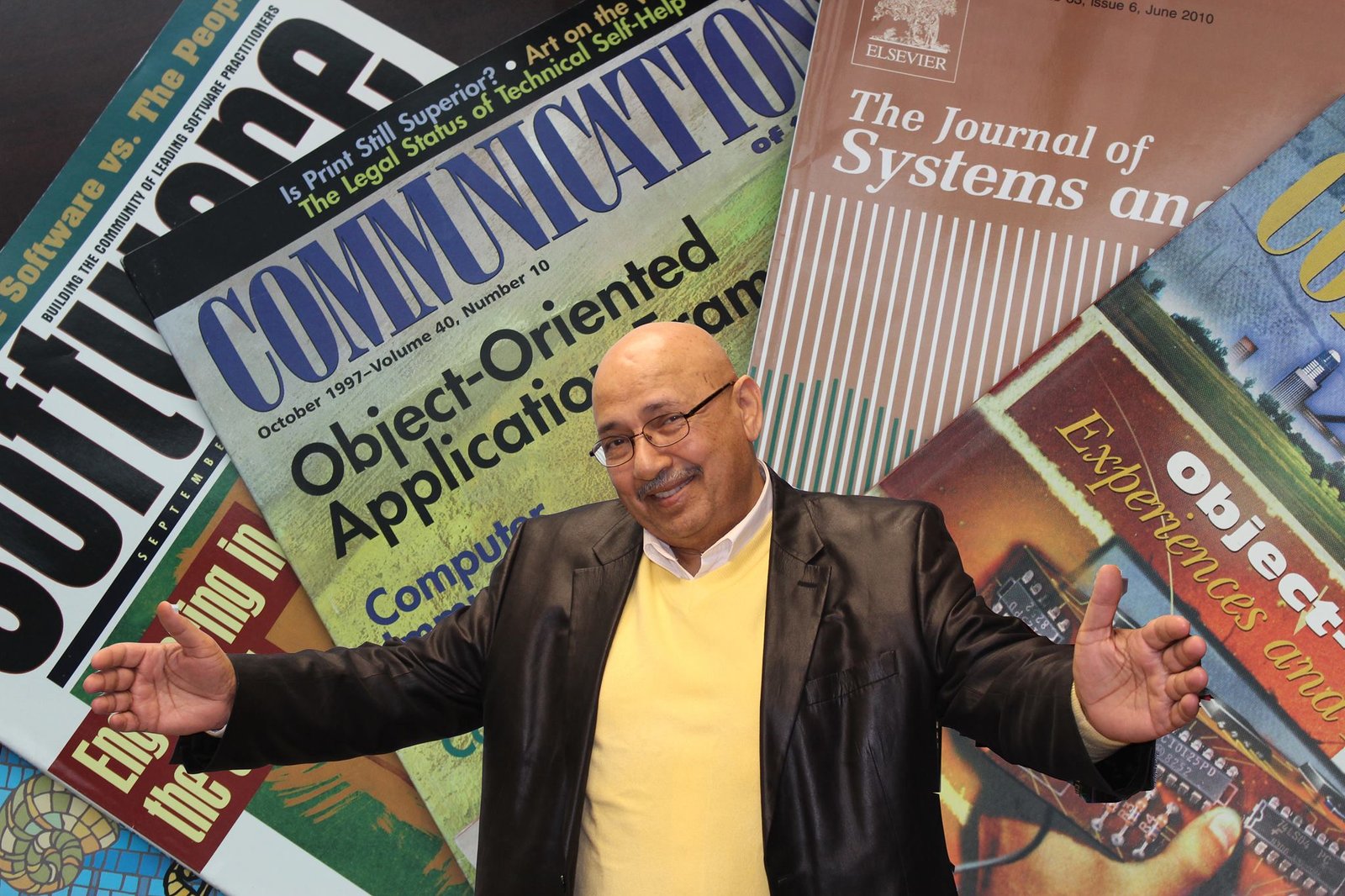Theme Issues
Software Patterns-CACM-Wiki-1996-ON
Software Patterns
[Introduction]
The following is content of the Communications of the ACM, Special Issue on Software Patterns, Vol. 39, No. 10, October 1996. The guest editors are:
Douglas C. Schmidt [https://en.wikipedia.org/wiki/Douglas_C._Schmidt] & [https://www.coursera.org/instructor/douglasschmidt]
Mohamed Fayad [https://en.wikipedia.org/wiki/Mohamed_Fayad] & [http://www.engr.sjsu.edu/fayad/]
View more
CACM & one ACM Computing Surveys
Google Scholar
Fayad: Introduction to the computing surveys' electronic symposium on object-oriented application frameworks (54 Citations) as of November 25, 2022
Fayad: Object-oriented experiences (44 Citations) as of November 25, 2022
Fayad: Object-Oriented Application Frameworks (1557 Citations) as of November 25, 2022
Schmeit, Fayad, and Johnson: Software Patterns (266 Citations) as of November 25, 2022
View more
Enterprise Frameworks-Abstract
Abstract
Enterprise frameworks are a special class of application frameworks. They are distinguished from other application frameworks in terms of scale and focus. In terms of focus, application frameworks typically cover one particular aspect of an application, either a domain-dependent aspect (e.g., billing in a web-based customer-to-business ordering system), or a computational infrastructure aspect such as distribution, manmachine interface, or persistence, etc.
View more
Fayad_Application_Frameworks-Theme-Issue
OBJECT-ORIENTED
APPLICATION
FRAMEWORKS
View more
Managing-OOSD-Projects-IEEE-Computer-1996
Computer
Guest Editors’ Introduction: Managing Object-Oriented Software Development
September 1996, pp. 26-31, vol. 29
DOI Bookmark: 10.1109/MC.1996.536780
Authors
Mohamed E. Fayad
Marshall Cline
Abstract
Project managers should not use the novelty of the object-oriented approach as an excuse to let software developers manage themselves. Even though project managers may be unfamiliar with the latest technical advances, they must stay involved in planning and controlling software development. Nonetheless, in many organizations developers have usurped management planning and control by convincing managers that OO is so different from other technologies that they can’t understand or control it. The long-term results of this “hyper-empowerment” are almost always unfortunate, ultimately threatening the business value of the OO approach. 1
View more
Object-Oriented Experiences-CACM-1995
The stakes are increasing every day as
more companies bet on object-oriented technology for military and commercial applica-
tion development. Instead of being an academic exercise, making a commitment to use
object-oriented technology is a very serious managerial and technical decision-one
which affects careers, projects, and entire organizations.
On the positive side is the promise of higher quality and more competitive applica-
tions when used effectively [2]. Object-oriented technology (OOT) promotes a better
understanding of requirements and results in more modifiable and maintainable appli-
cations, providing other benefits such as reusability, extensibility, robustness, reliability,
and scalability. OOT promotes better teamwork, good communication among team
members, and a way to engineer reliable software systems and applications.
View more
OO Application Framework-CACM-October-1997
Object-Oriented Application Frameworks
Mohamed Fayad
Douglas C. Schmidt
The following is the guest editorial for the Communications of the ACM, Special Issue on Object-Oriented Application Frameworks, Vol. 40, No. 10, October 1997.
View more
Software Engineering in The Small
Over the past five to eight years, software has become a vital component of almost every business as well as of national economies. Almost every product or service has become software-enabled. As a result, organizations’ competitiveness is largely becoming dependent on their abilities to use software as a competitive weapon.
View more
Software-in-the-Small-EEE Software-Sept-Oct-2000
EEE Software
Guest Editors' Introduction: Software Engineering in the Small
September/October 2000, pp. 75-77, vol. 17
DOI Bookmark: 10.1109/MS.2000.10047
Authors
Mauri Laitinen
Mohamed Fayad
Robert Ward
View more

